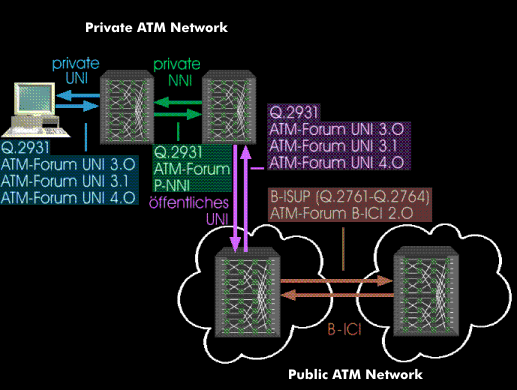Q.2931
Q.2931 is the signaling protocol in broadband ISDN that is used for call setup, call termination, and call control. The previous designation was Q.93B.
The Q.2931 protocol provides unusual functionality due to the unique complexity of the operation. A large number of signaling channels have the task of agreeing on different traffic parameters such as the AAL( ATM Adaption Layer) type, streaming/ message mode, guaranteed/non-guaranteed transmission method, bit rate, cell loss rate, cell delay, and many more.
In addition, novel traffic topologies such as multipoint connections or broadcast connections have to be handled. The Q.2931 signaling protocol was developed from the Q.931 and Q.933 narrowband ISDN protocols, functionally enhanced and embedded in a flexible signaling architecture.
In B-ISDN, signaling is performed via ATM channels( VC, Virtual Channel), which are selected by the meta-signaling running on the ATM layer. The signaling sequences within Q.2931 can be functionally divided into two sections, namely connection setup on the transmitter side and connection setup on the receiver side. On the transmitter side, the protocol can only be used if a virtual channel (VC) exists between the user and the network. If the connection is established from the receiver side, then an incoming call is signaled to the receiving station from the network. The receiving station then performs a compatibility check concerning traffic parameters and quality of service, and confirms it. The connection is then activated.
The Q.2931 protocol consists of five functional elements: The protocol discriminator, the call reference, the message type, the message length and other information elements that are used as required.

